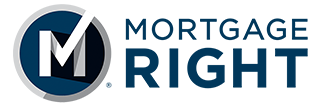Running a Mortgage Branch: How Much Does it Cost?
In this article
In this article we’ll look at the individual income and expenses involved with running a P&L mortgage branch. This will help you understand all the revenue and costs involved. In the MortgageRight model you see ALL the revenue which includes:
- Total Sale Income – total BPS margin earned based on the rate you lock
- Origination & Closing Fees – Any fees charged upfront like origination or discount points
Our model is designed to give you access to the maximum BPS available so you can have the extra capital to scale your business. No gimmicks or gotchas, tiered pay or bonus caps, it’s just a straight deal. You will also see all the expenses involved with your individual mortgage branch based on what type of mortgage branch you run.
Some expenses will not apply with our model like a back-end scoop or success fee many mortgage branch platforms charge (this can be as high as 125 bps in some cases!) although it will not apply with us it’s good to be aware of these expenses when comparing models. One of the main benefits of the MortgageRight mortgage branching model is you can pay ALL your expenses pre-tax right from your P & L. By structuring an upfront model like this you end of up keeping more BPS giving you the extra capital you need to reinvest back into your mortgage branch to grow.
Advertising
The costs of advertising can include:
- Print media, including newspapers and magazines
- Radio, including podcasts
- Television, including cable television and streaming services
- Internet—costs include buying banner ads on websites, paying for keywords that appear with searches related to your business
- Social media—the cost of social media varies widely based on what platforms you use most frequently and how many people see each post; however, the average cost is approximately $25 per day spent maintaining your presence across Twitter/Facebook/Instagram/etc., etc., etc.). It’s also important to consider how often new content must be created for these platforms in order as well as what payment methods will work best for each platform!
Appraisal Fee
The appraisal fee is the fee paid to a lender to determine the value of a property. The costs vary depending on the loan amount and can range anywhere from $375-$650+. This fee is usually paid by the borrower but can sometimes come out of the total loan amount.
Credit Reports
Credit reports are fee for the ability to check a person’s credit history. These reports can be used to check the credit history of a potential employee, customer or partner. A good credit report will show that you have been paying your bills on time and do not have any debts outstanding. A bad credit report will show that you have had trouble with your finances in the past and may struggle to keep up with payments as they come due in future. This cost is $25 – $50
Consumers should always ensure that they request access to their own personal information before deciding whether or not they wish for it to be shared with third parties such as employers or landlords.
Early Payoff Chargebacks
Chargebacks are fees charged to the lender if a loan is paid off or sold before 6 payments are made. These fees can be avoided by a client not paying off a loan early (within 6 payments of funding) and keeping your account open for as long as possible. If you do have a chargeback, it will usually be calculated as the commission you earned on the loan. This can be avoided by making sure you client plan to stay in the home at least 6 months after closing.
Employee Benefits
Employee benefits are another cost for any business, and they can be a tax advantage for employees.
Employee benefits include health insurance, 401k, disability insurance, life insurance and other insurances.
Employee benefits are considered a tax-advantaged way of paying your employees’ wages. The employee may receive a benefit that is not taxable as income but would be included in the employee’s gross pay if paid as cash. That is because the employer has already paid income taxes on this money before paying it out to the employee in some form (through salary). This means that it’s possible for an employer to pay an employee more than he or she would earn on paper without having the government take their share of taxes from those earnings – making them even more valuable than they seem at first glance!
Insurance
In the case of insurance, it’s important to know what you or your company covers when it comes to health, vision, and dental insurance. This will depend on your setup and how many employees you have at your branch The good news it’s all paid pre-tax. The Company offers a full suite of medical, dental and vision benefits through United Heath Care. In addition to these benefits, employees have access to Life & Disability Insurance as well as a 401(k) Retirement Plan. Along with this offering comes a flexible work environment that allows you to enjoy the benefits of working at MortgageRight while maintaining your personal life outside of work
Loan closing expenses:
- Lender credits
- Tolerance cures
- Bank Wire
- Escrow fees
- Notary fees
Office Expenses Including Rent or Lease
You should include office expenses in your budget, such as rent or lease.
Office expenses are fixed costs, meaning they don’t change much based on how much business you do. As a result, it’s a good idea to include them in your budget so that you can plan for them and make sure they aren’t eating up too much of your profits. You may also want to use your rent or lease as a benchmark for other office-related expenses like utilities and equipment purchases.
Underwriting Fee
The underwriting fee for all loans closing through the MortgageRight platform is a flat $995 fee which is typically charged to the borrower.
Telephone, Software & Utility Expense
Telephone and utility expenses are common for any mortgage branch. They are a need tool for any business, and it can be used in many ways. Here are some examples:
- Internet / Cable
- Phone
- Software’s / Apps
- Cloud Service
- Cell Phone
As you can see from these examples, running your own business means having constant access to communication devices so that you do not miss out on important information that could affect the success of your branch!
Training Costs
These are the costs of training staff and can include online courses, books and other resources. Utilities and software (including accounting software, CRM and other management software). Utilities include electricity, gas and water usage where your business is located. Software includes accounting software, CRM and other management software.
The main costs of running your mortgage branch should be included in your budget.
The main costs of running your mortgage branch should be included in your budget and will depend on your specific situation. These include advertising, appraisal fee, bank charges, credit reports, early payoff chargeback fees, employee benefits and insurance. The following items can also be added to the list: loan closing expenses (the cost of processing a mortgage application), office expenses including rent or lease payments; telephone expense; training costs for staff; utilities and software for equipment such as photocopiers or fax machines.
Conclusion
The main costs of running your mortgage branch should be included in your budget. The cost of opening a new mortgage branch will vary depending on your unique set of circumstances., but the long-term benefits of running your own mortgage branch can make it worthwhile for you. You will have to make some sacrifices along the way, but if you’re willing to do what it takes then the long-term rewards will be a real game changer for you and your business.

